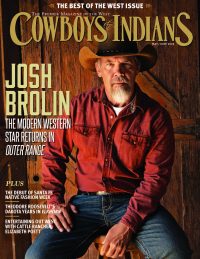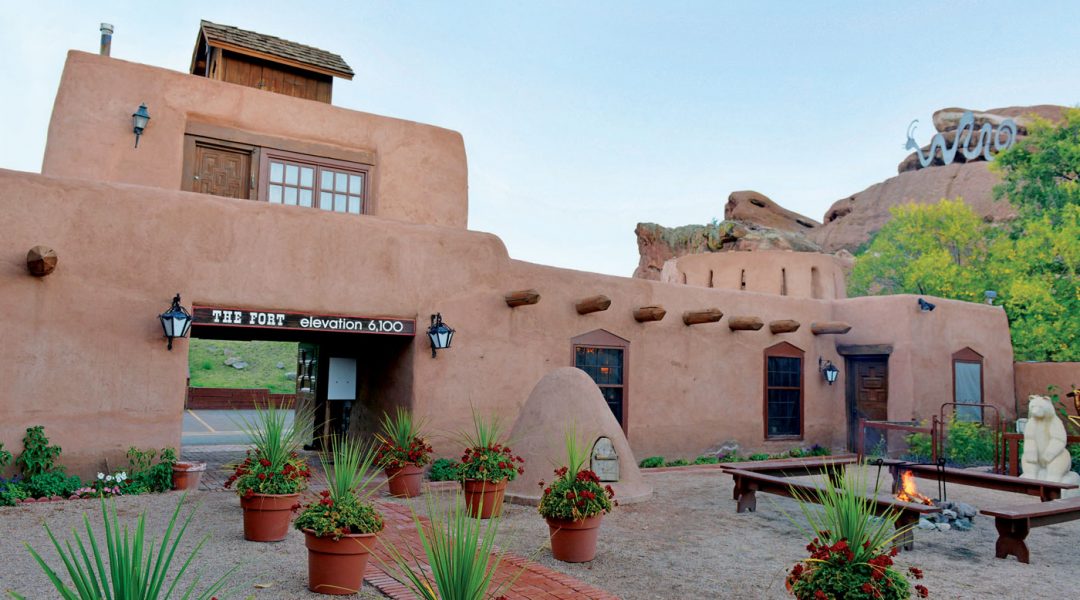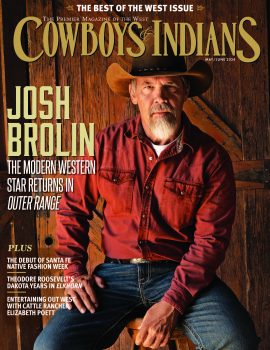A Colorado restaurant in a replica of a historic trading post offers a bite of the Old West.
As the long trays of sawed-open bison shinbones hit my table, I realize I am about to relish history. I slather the rich, jellied marrow on slices of crostini and imagine that I am in the original Bent’s Old Fort, an adobe trading post established in 1833 by Charles and William Bent and Ceran St. Vrain along the Santa Fe Trail in southeastern Colorado. Instead, I’m dining at The Fort in Morrison, Colorado, a replica restaurant — itself on the National Register of Historic Places — dedicated to exploring the food trends of the 1800s, both of the local Native American residents and the pioneers who traveled here.
Samuel P. Arnold, a Yale-educated adman and aficionado of the West’s culinary history, began construction on The Fort as a home for his young family. But when funds ran low, he realized he needed another plan.
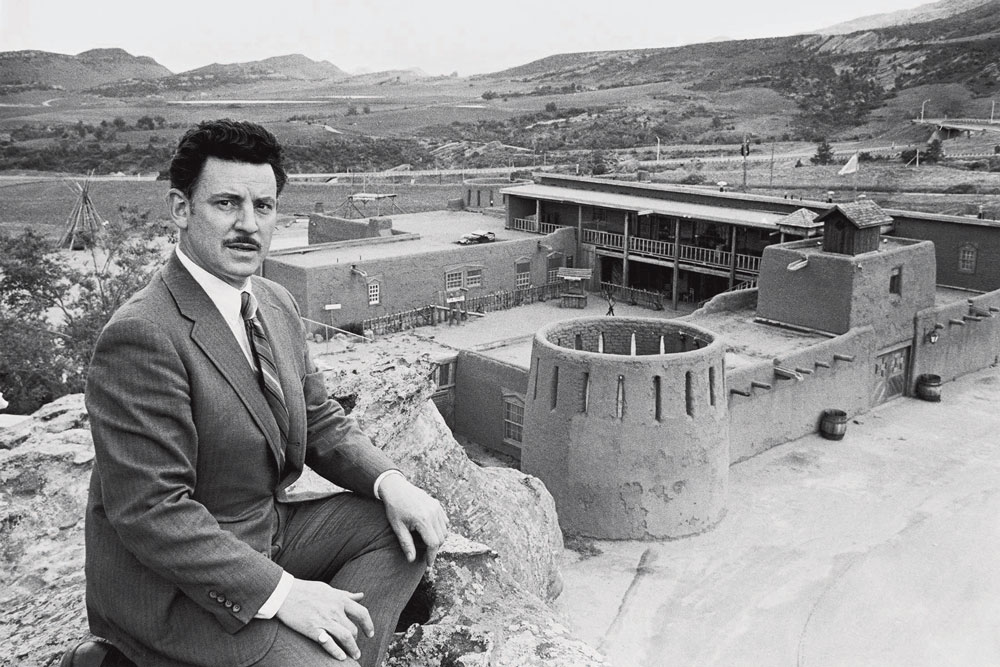
“It was really to be [my parents’] dream home and to be a living history museum to teach the public about Bent’s Fort,” says Holly Arnold Kinney, Arnold’s daughter and The Fort’s current owner. “But then they ran out of money to finish building because everything was done authentically — they were making every adobe brick that’s in the building on the premises and were handcrafting all of the furniture. And so they went to the Small Business Administration, which said, ‘We’ll loan you the money to finish it if you put a restaurant in it.’ ”
Kinney’s parents had no restaurant experience, but her father was undeterred. He turned to her mother and said, “Well, I know you can cook.”
From its first service in 1963, The Fort, with its sun-cooked earthen walls and rustic trimmings, became a place where diners could experience what Kinney calls “the new foods of the Old West.” The menu is culled from her father’s collection of 3,000 cookbooks and historic documents that he acquired to sate his appetite for the West. The avid bow hunter supplemented the menu’s focus on game meats with dishes adapted from expedition journals and yellowed recipe clippings. The result is a contemporary twist on the culinary traditions of trappers, traders, and pioneers preceding the Civil War.
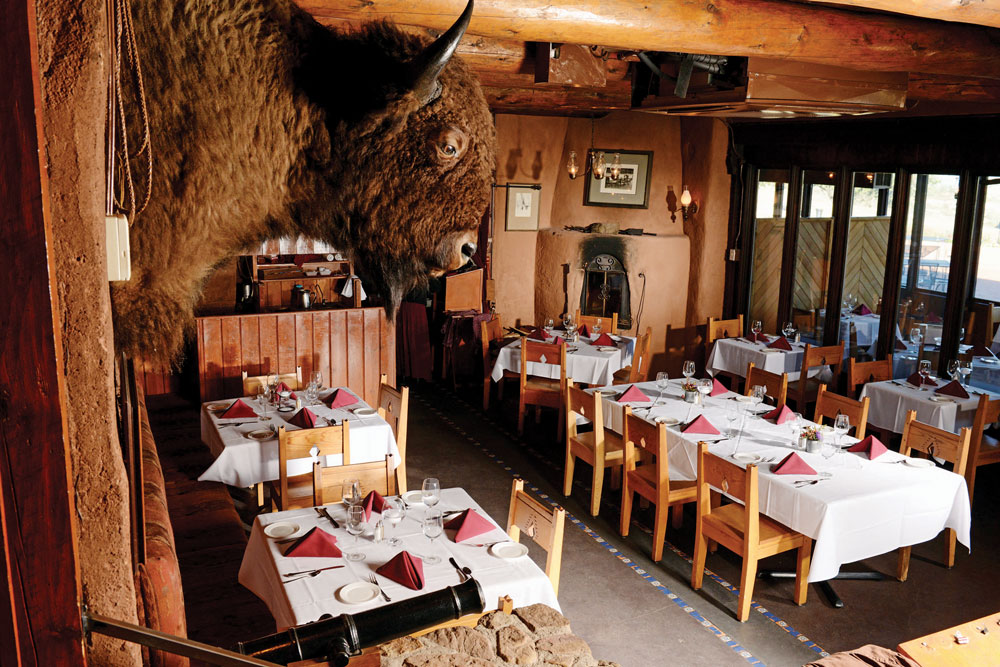
Peanut butter-stuffed jalapeños with mango chutney, an Arnold favorite, have been served since The Fort’s beginning. Slivers of bison tongue topped with shots of horseradish caper sauce, the colors swirling like a newly dry riverbed, rest on toast. Rounds of bison sausage — what 19th-century French fur trappers called “boudies” — share table space with fried nuggets of bull testicles, better known as Rocky Mountain oysters. The Fort’s version of Scotch eggs, Bison Eggs, again call on bison sausage. But this time, it’s wrapped around pickled quail eggs and plated with sweet red chile sauce.
None of the appetizers last long, especially when knocked back with potent concoctions like Trader’s Whiskey, a tincture of whiskey, tobacco, and gunpowder that comes with a warning. “If you smoke, I recommend you don’t light up for an hour,” cautions Tom Lucas, The Fort’s general manager, as he serves me the drink.
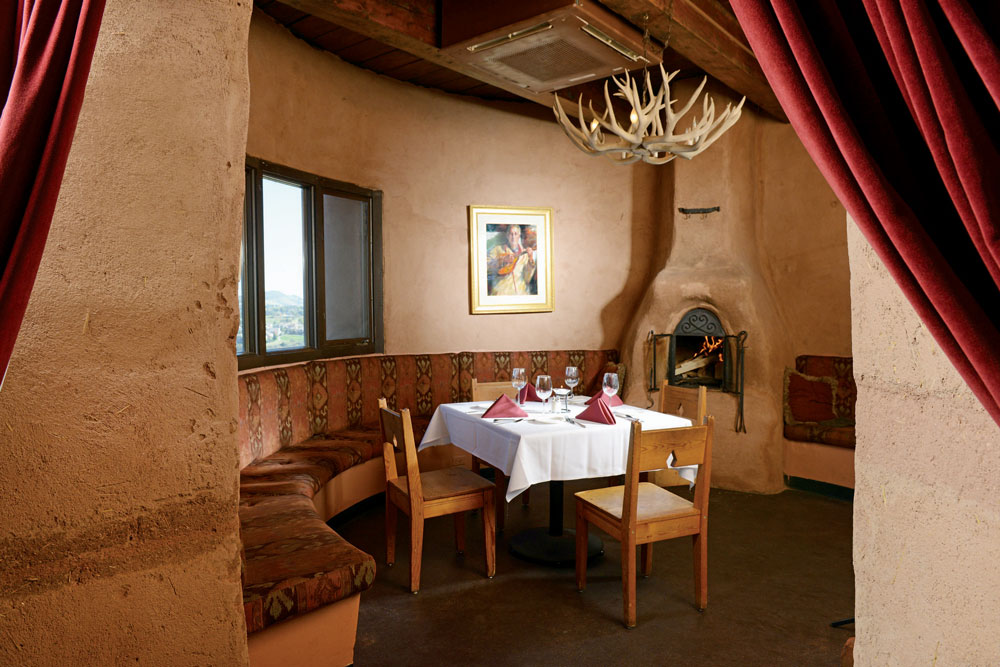
The Game Plate, my choice for an entrée, is a hefty trio of a buffalo sirloin medallion, a grilled teriyaki quail, and a bone-in elk chop topped with sweet and tart huckleberry preserves. If you skip the starters, this dish serves as an excellent introduction to The Fort’s expertise with wild game meats. As Kinney says, “We have a lot of new customers who have never tried deer or venison. They’ve never tried buffalo. They’ve never tried quail. They can taste each different item and see which they like best.”
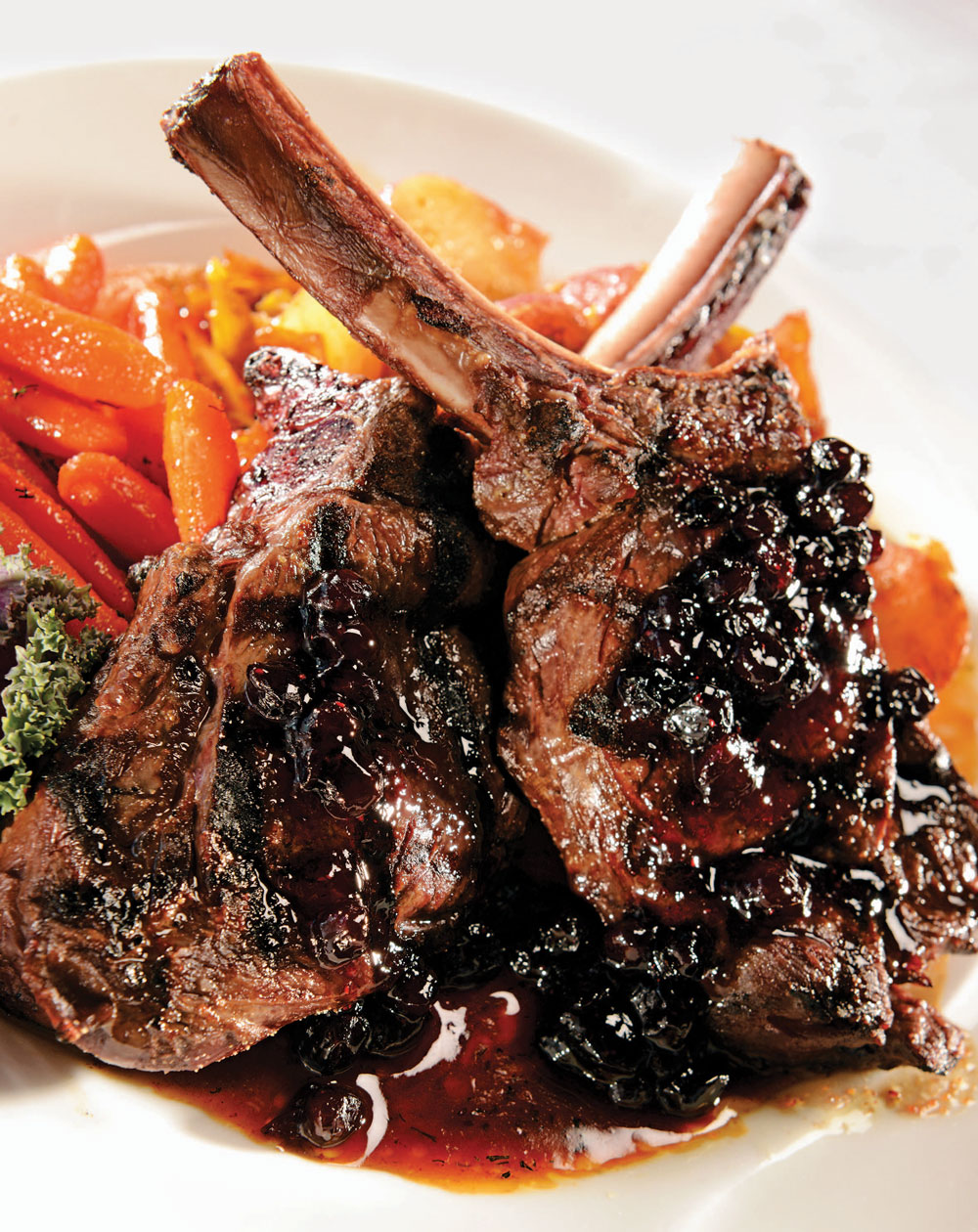
It’s hard to go wrong here, especially if you order a side of the Thomas Jefferson-inspired macaroni and cheese. The perennial comfort food is a surprisingly light preparation of elbow macaroni in a béchamel sauce that’s mixed with Gruyère. For dessert, there’s a rotating selection of crème brûlées, including a delightful s’mores rendition that brings a campfire favorite into the fine-dining realm.
As I sit in the east-facing back dining room, an after-dinner Trader’s Whiskey in hand, the setting sun splashes a pink wave across the sky and the surrounding red rocks. The soft tones of a Native American flute played by Eric Many Winds Herrera emit from the North Patio, the room that hosted the 1997 Denver Summit of the Eight and in which flags representing the member countries now hang.
Outside, in The Fort’s courtyard, other flags hang, appearing to wave in the flickering light from a bonfire. But those banners represent only one country, the U.S. of A., and showcase the evolution of Old Glory during the life of Bent’s Old Fort.
The past is everywhere at The Fort. Kinney and her staff won’t let you forget it. That doesn’t mean the restaurant is at risk of going stale, though. Not a chance. With Kinney’s continued mining of the extensive archive at her disposal to freshen up classic recipes, history will remain as enticing as ever.
The Fort and the Tesoro Cultural Center are located at 19192 Colorado Highway 8, Morrison, Colorado.
From the February/March 2015 issue.



